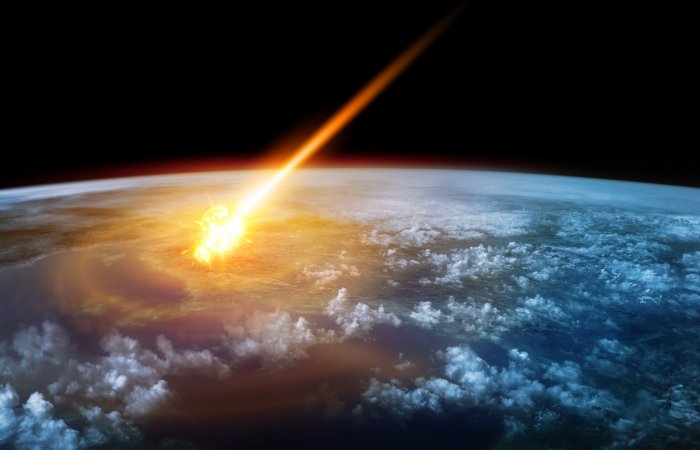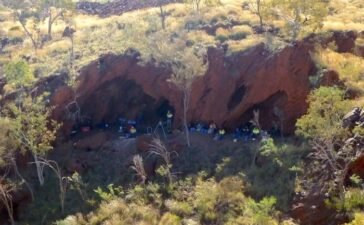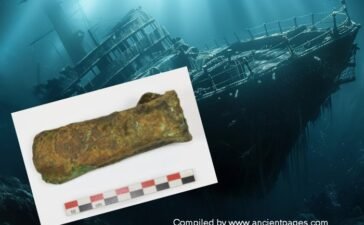Jan Bartek – AncientPages.com – The Younger Dryas impact hypothesis proposes that a series of extraterrestrial airbursts or impacts occurred around 12,800 years ago, leading to significant global consequences.
Credit: Adobe Stock – James Thew
According to this theory, these cosmic events triggered the Younger Dryas cooling period, widespread wildfires, and the extinction of numerous megafaunal species. Additionally, it suggests that these catastrophic occurrences contributed to substantial changes in human populations across North America, South America, Europe, and the Middle East. The hypothesis links these extraterrestrial impacts to the end-Pleistocene megafaunal extinctions and major cultural shifts among human societies during that period.
Evidence Of The Younger Dryas Impact
The Younger Dryas impact hypothesis has faced criticism due to the lack of evidence of a massive crater. Critics argue that an impact of such magnitude would have left a distinct and sizeable crater, yet no such crater has been discovered. This absence of a crater site has been a point of contention for those who challenge the validity of the hypothesis, as the presence of a crater would provide substantial physical evidence to support the proposed cosmic impact event.
Christopher Moore, an archaeologist at the University of South Carolina, says that looking below the surface reveals strong evidence for the Younger-Dryas impact hypothesis. This hypothesis states that large comet fragments hit Earth or exploded in the atmosphere shortly after the last ice age, setting off cataclysmic changes in the environment, crater or not.
Moore’s research delves into examining soil layers that would have been exposed during the Younger Dryas period, approximately 12,800 years ago, when the climate in the northern hemisphere experienced a sudden cooling. His analysis focuses on minerals and artifacts found within these layers, seeking “proxies” or indirect evidence that suggests the occurrence of a comet strike. While not direct evidence, these proxies can provide insights into the events that transpired.
Notably, in Greenland’s ice cores, Moore and other researchers have discovered elevated levels of combustion aerosols, chemical compounds indicative of a large, prehistoric fire that raged at the onset of the Younger Dryas climate event.
Researchers have uncovered intriguing evidence that suggests a cosmic impact event occurred on Earth in the distant past. Moore has discovered traces of platinum, a rare element in Earth’s crust but abundant in comets, at various sites across Syria and South Carolina. Additionally, he has found microscopic, magnetic iron balls called “microspherules,” which indicate that melted iron was dispersed globally by a powerful force. Moore’s latest finding involves “shock-fractured quartz” grains discovered at three separate locations in South Carolina, Maryland, and New Jersey.
These quartz grains exhibit microscopic cracks where the mineral transforms into melted silica, requiring immense pressure and heat. These altered quartz grains across such a wide geographical area suggest a significant impact event, as quartz does not undergo such metamorphosis and travel hundreds of miles without a substantial force. These discoveries collectively build a compelling case for a cosmic impact event that left its mark on Earth’s geological record.
“It’s like putting 75 elephants on a quarter,” Moore says. “It’s a tremendous amount of pressure that creates what we’re seeing.”
The study conducted by Moore involved examining various dig sites to investigate the Younger Dryas period. One of the sites was Flamingo Bay, a shallow wetland located within the Department of Energy’s Savannah River nuclear site. Additionally, Moore explored Parsons Island in Maryland, in the Chesapeake Bay, and Newtonville, New Jersey, approximately 25 miles inland from Atlantic City.
Across these three sites, Moore discovered a higher concentration of shock-fractured quartz, platinum, and microspherules at depths corresponding to the Younger Dryas time period compared to the surrounding soil layers. Notably, this is the first instance where shock-fractured quartz has been found at the Younger Dryas depth across multiple sites.
However, according to Moore, it is also one of the initial studies specifically searching for shock-fractured quartz, suggesting that further samples may emerge as more widespread investigations are conducted.
A Craterless Comet?
Moore’s findings indicate that a comet impacted the Earth, dispersing minerals over a wide area. This impact likely triggered a massive fire that consumed the vegetation eaten by giant mammals. Additionally, the smoke from such an extensive fire could have initiated a period of global cooling. These events are proposed as potential factors contributing to the mass extinction event.
“I suspect that it played a big role in leading to the extinction of the megafauna,” Moore says in a press release.
Credit: Adobe Stock – Jayce
The Younger Dryas event raises a couple of vital questions. Firstly, critics of the Younger Dryas hypothesis frequently ask: Where is the crater? While Moore does not entirely dismiss the possibility of a crater, he acknowledges that the comet might not have left one. Computer simulations have demonstrated that a comet could potentially explode before impacting the ground, generating a powerful shock wave capable of causing widespread effects without leaving a single identifiable crater.
“They explode in the air before they hit the ground, but if they’re low enough, the shockwave and heat can hit the ground and melt sediment, produce microspherules, and shock the quartz,” Moore says, describing the hypothesis.
Then there’s a more existential question: If a large comet hit our planet once, could it happen again?
The threat of celestial objects colliding with Earth is a real concern, which is why scientists actively monitor the skies for objects on a potential collision course. However, the current methods of detection are not infallible. Since 2001, military satellites have detected more than 20 large meteors exploding in the upper atmosphere with an energy level comparable to a nuclear explosion. These previously undetected meteors detonated at a high altitude, posing no direct threat to the ground, but their presence cannot be ignored.
According to Moore, these incidents occur more frequently than most people realize, and it is only a matter of time before an impact similar to the Younger Dryas event occurs. However, he remains optimistic, stating that statistically, most future meteor impacts would have localized and short-term effects rather than global, long-lasting consequences.
Despite this, Moore emphasizes the importance of continued vigilance and research in this area, as understanding the potential impact of these events on past human societies could provide valuable insights for the future.
Written by Jan Bartek – AncientPages.com Staff Writer








